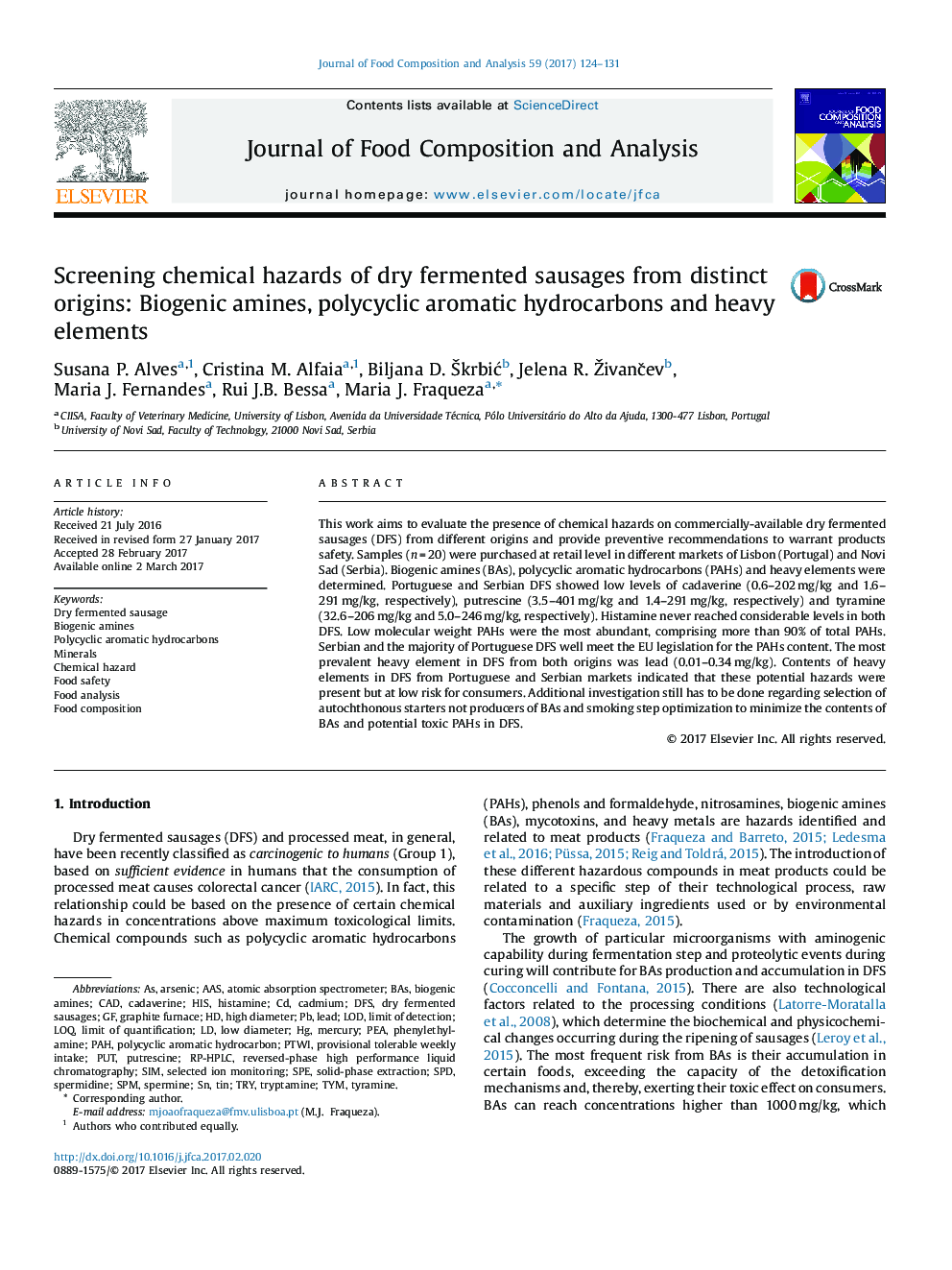| Article ID | Journal | Published Year | Pages | File Type |
|---|---|---|---|---|
| 5136958 | Journal of Food Composition and Analysis | 2017 | 8 Pages |
â¢The studied dry fermented sausages contained safe levels of biogenic amines.â¢Dry fermented sausages well meet EU legislation for polycyclic aromatic hydrocarbons.â¢Good manufacture practices to minimize polycyclic aromatic hydrocarbons are needed.â¢Heavy elements contents in sausages did not present a health risk for consumers.
This work aims to evaluate the presence of chemical hazards on commercially-available dry fermented sausages (DFS) from different origins and provide preventive recommendations to warrant products safety. Samples (n = 20) were purchased at retail level in different markets of Lisbon (Portugal) and Novi Sad (Serbia). Biogenic amines (BAs), polycyclic aromatic hydrocarbons (PAHs) and heavy elements were determined. Portuguese and Serbian DFS showed low levels of cadaverine (0.6-202 mg/kg and 1.6-291 mg/kg, respectively), putrescine (3.5-401 mg/kg and 1.4-291 mg/kg, respectively) and tyramine (32.6-206 mg/kg and 5.0-246 mg/kg, respectively). Histamine never reached considerable levels in both DFS. Low molecular weight PAHs were the most abundant, comprising more than 90% of total PAHs. Serbian and the majority of Portuguese DFS well meet the EU legislation for the PAHs content. The most prevalent heavy element in DFS from both origins was lead (0.01-0.34 mg/kg). Contents of heavy elements in DFS from Portuguese and Serbian markets indicated that these potential hazards were present but at low risk for consumers. Additional investigation still has to be done regarding selection of autochthonous starters not producers of BAs and smoking step optimization to minimize the contents of BAs and potential toxic PAHs in DFS.
